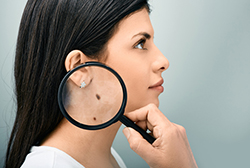
Guide To Hair Transplant Options
Deciding to do a hair transplant is a major decision, but the more important decision is choosing the type of hair transplant procedure you want to have. There are two main types of hair transplant surgery, including FOLLICULAR UNIT EXTRACTION (FUE) and FOLLICULAR UNIT TRANSPLANTATION (FUT).
What Is A Hair Transplant?
Hair transplant surgery takes hair from one area of your scalp to help fill in other areas that are bald or thinning. Since the 1950s, patients have been looking at this type of surgery as a solution for hair loss. Through the years these treatments have changed a lot. Advancements in technology have allowed individuals to undergo hair transplant surgery one day and return to work the next. The results are stunning, hair growth is natural-looking and permanent.
Hair Transplant Options
The market is saturated with hair loss options, and it makes it hard for individuals to know which methods are the best. It is important that you take the time to understand what hair transplant options are available to you, so you can get the best results. After all, you are only steps away from becoming a more confident you. If you want a natural-looking and permanent solution, then hair transplant surgery is the way to go.
Follicular Unit Extraction (FUE)
FUE is a minimally invasive outpatient natural graft placement procedure. Used to recreate the hairline, as well as a natural-looking growth pattern that is permanent. A small instrument is used to remove the follicular units from the patient’s scalp. This device creates a tiny circular incision around the follicular unit, isolating the graft. A tweezer-like instrument is used to remove the graft from the scalp. It is then prepared by highly skilled technicians to be placed in an area where there is thinning hair. Follicular units are removed one by one, and there are absolutely no scarring or stitches. Some physicians use a Neograft hair transplanting system, which is a machine that manually extracts and implants the follicular units during the FUE procedure. Each follicular unit may contain 1 to 4 hairs. Hundreds or even thousands of hairs can be transplanted in one treatment session. FUE is designed to give optimal results and comes with little to no side effects. Patients can typically return to their normal routine within a day or two.
Follicular Unit Transplantation (FUT)
FUT is performed under local anesthetic. During this procedure, a thin strip of donor’s hair will be extracted from the back of the head. Hair genetically grows better on the back of the head, and this is why the harvested strip is taken from this area. This procedure is more invasive than FUE but can give significant results in one surgery session. Once the stip is removed, sutures are placed using the surrounding hair to hide the incision area. A team of technicians will carefully trim and dissect the donor strip to create follicle units. These units will then be transplanted to areas where the hair is thinning. You may experience some side effects including pain, tightness or numbness. However, this typically subsides within a day or two. Any swelling or redness should be gone within a week. Hair growth should be noticed within three months of having the procedure.
Candidates For Hair Replacement
Hair transplant surgery is not for everyone. Ideal candidates include:
- Male-pattern baldness
- Female-pattern baldness
- Hair loss due to burns or scalp injuries
- Individuals who have recently experienced hair loss
Hair transplant surgery is not ideal for:
- Women experiencing wide-spread hair loss
- Men or women who do not have a good hair-bearing site for follicular to be taken from.
- Individuals who are prone to Keloid Scars, as a result of trauma, surgery, burns or radiation.
Alternatives to Hair Transplant Surgery
There are many other options on the market that have proven to be effective in enhancing hair growth. These range from medications to non-surgical procedures. Some of these treatment options are used in conjunction with hair transplant surgery. It’s all about giving you the best results that will last for years to come. Here are just some that you may want to consider.
Medications
- Minoxidil (Rogaine) – This over the counter liquid is directly applied to the scalp up to two times a day. It will help stimulate hair growth and increase the thickness of hair.
- Finasteride (Propecia) – Taken in pill form, it helps decrease DHT from being produced by the body. It is most often used by men, as it is not an effective treatment for women.
- Corticosteroids – Comes in pill form and as a cream. It is used to help enhance hair growth.
- Anthralin (Drithocreme) – A topical cream that is highly effective for those suffering from Alopecia Areata. It can stimulate hair growth by 25 percent.
Life Changes
- Nutrition – A lack of nutrition can cause hair to thin. It is highly important that your body has all the nutrients it needs to truly thrive. Ensure your meals are infused with the proper vitamins and minerals to keep your body performing at optimal levels.
- Exercise – Being active has so many benefits. Obesity can cause a number of negative effects on the body including hair loss. Ensure you stay active to keep your body looking and feeling young.
- Reduce Stress – Stress can affect the body in so many different ways. Hair loss is one of the biggest side effects of stress. Ensure you get plenty of sleep each night and adapt some stress-reducing activities to turn to when stress levels are heightened.
Frequently Asked Questions About Hair Transplant Surgery
Does a hair transplant hurt?
There may be some discomfort after the surgery, but the pain is controlled with Tylenol and ice.
Will a hair transplant leave a scar?
Each follicular unit is extracted one by one in an FUE procedure. FUT requires a whole strip to be harvested at once, so there could be some scarring. However, scarring can easily be hidden with surrounding hair.
How long does a hair transplant procedure take?
This will highly depend on the number of follicular units being transplanted. Both FUE and FUT can take up to 8 hours to complete.
How long before I see the results of my hair restoration?
Results can be seen within 3 to 4 months.
Is a hair transplant permanent?
Your newly transplanted hair will act as it was before. It will typically last for many years, but there’s no guarantee that it will last forever.





